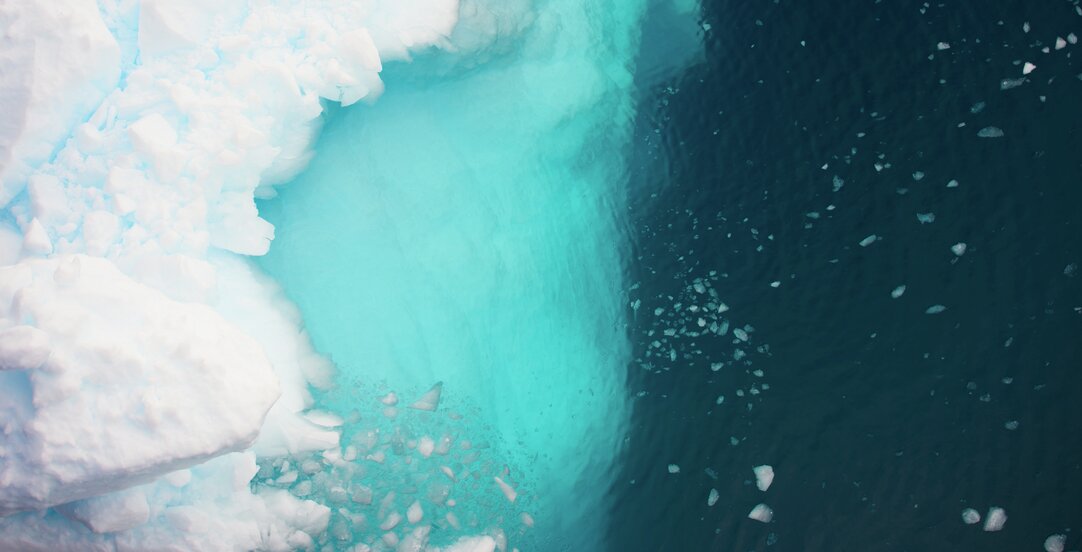The High North Report – an "ocean of opportunities"?

On 27 November 2020 the Norwegian government presented a white paper on the High North with the title "People, opportunities and Norwegian interests in the Arctic" (the "High North Report"). The report is the first white paper on the Northern region in nine years, and sets out the government's policy on foreign relations, climate change and environmental concerns, community development, business, infrastructure, transport and safety.
Reading time 6 minutes
The report is closely linked to the ocean. The northern oceans provide a livelihood for many, important transport routes and have the allure of undiscovered or at least as of yet unutilised natural resources. In light of the report we present this newsletter and three articles with our observations on the commercial potential of the High North from an "ocean perspective", and regarding shipping in particular. We comment on the potential for new business opportunities, but also note that increased commercial activities in this sensitive environment with often harsh weather conditions likely will lead to challenges of negative environmental consequences and higher risk of maritime casualties. We therefore also comment on upcoming fuel standards and emissions regulations, and the particular challenges of maritime casualties in the High North.
Sustainable growth and value creation
For the Norwegian Government, the "High North" is its "most important strategic area of responsibility". The white paper therefore addresses a broad range of issues, under the keywords "potential for sustainable growth and value creation" and "the green shift giving potential for growth". The goal is to facilitate industry and commercial activity in the North through sustainable value creation and green competitive advantage. The oceans are identified as being of particular significance, since 80 percent of Norwegian ocean areas are located north of the Arctic Circle.
The white paper highlights the government's aim to ensure predictable conditions and create a good framework for industry and commerce in the North, particularly within maritime and marine sectors. This is seen as important for ensuring sustainable blue growth in the North.
Offshore oil and gas is still highlighted as having potential for growth in the next two decades, and of other alternative energy sources offshore wind power is mentioned as a possible target area.
Fisheries will of course continue to be of high importance to the North and continuous sustainable growth in both fisheries and aquaculture is prioritised.
The potential for investment, development and growth within the maritime industry and port services is also emphasised. Norwegian seas already have the biggest part of vessel traffic in the Arctic, including fishing vessels, offshore service vessels, cargo vessels and cruise vessels. The possibility of transit traffic through the Northern Sea Route brings further prospects. Green shipping is an important priority area for the Norwegian Government, and there is potential for more environmental friendly solutions through zero and low emission technology, different fuel mixes and energy sources (electro, hydrogen, bio gas, charging systems). There is generally a surplus of renewable energy in the North, which might be good for electrifying maritime industries, vessels, ports and aquaculture facilities.
Finally, the mining for sea bed minerals represents an interesting opportunity for future value growth in the North. The Government aims to facilitate the exploration and exploitation of these.
In these key areas and high competence industries, the Norwegian government will continue to facilitate for advanced technological development, continuous development of know-how and capability and long-term investment and access to capital. An investment fund with both state and private equity managed and administered from Northern Norway will be established for this purpose.
New opportunities
The reason for the increased interest in the Arctic is understandable. The Arctic sea-ice is melting, and as the ice-cap withdraws, previously inaccessible areas becomes accessible and unveil economic prospects – often dubbed "an ocean of opportunities".
The temperature in the Arctic is rising at twice the speed as the global average, and has the last three decades risen 2.4 times faster than the Northern Hemisphere average. The sea-ice is melting at rapid speed (every year or so reaching new record lows) and some studies suggest the Arctic will be virtually ice free during the summer as early as in the 2030s.
An ice-light Arctic Ocean enables increased commercial fishing, cruise industry and transport of people in the region. It might further represent an interesting alternative to the traditional cargo shipping routes between Asia and Europe, as it shaves off distance considerably (and hence cost, fuel, food, crew wages and tolls), (possibly) saves costs of fees imposed by the coastal states, and offers alternative routes to international choke-holes. The two routes that have advanced as the most promising options for intra-Arctic traffic, the Northern Sea Route (NSR) and the North West Passage (NWP) are however currently too ice-prone to be considered viable commercial options. The NSR runs from Dazhneva Cape along Russia's northern coast to Kara Gate or Zhelaniya Cape, and the NWP runs through the straits of Canadian archipelagic waters linking Baffin Bay to the Bering Strait.
There is also extensive resource development in Arctic regions in the form of offshore oil drilling, and the decrease in sea-ice will make operations and access for vessels associated with these operations much easier. The development of Yamal and other associated LNG projects in the Russian Arctic and the Norwegian government's granting of licences in the 23rd licensing round are illustrating, but also mining for precious minerals on the sea bed and offshore wind offers interesting opportunities. In the proposed state budget for 2021, the Norwegian government suggested to grant NOK 30 million for mapping of seabed minerals and has opened up for future exploration and exploitation. Increased activity will again lead to further need for transport.
The opportunities that a more open Arctic offer are also closely monitored by other states than the so-called "Arctic 5+3" consisting of the littoral states to the Arctic Ocean – Canada, Norway, Russia, US and Denmark (through the curtesy of Greenland), as well as Finland, Sweden and Iceland. Particularly China has shown an interest in the region and released its "Arctic Policy" whitepaper in 2018 proclaiming she is a "near Arctic state".
With opportunity comes responsibilities
Even though the diminishing sea-ice represents interesting opportunities, increased activity in the Arctic is also precarious and has to be performed with caution. The Arctic environment is harsh, cold and dark, there will be ice present for large parts of the year, the Arctic is sparsely populated and remote, and the weather has become more unpredictable. Combining these factors with increased shipping activities, the likelihood of a major maritime casualty increases. We address the particular challenges of emergency response and clean-up operations in our article:
Maritime Casualties in the High North
The release of CO2 and other emissions is an acute problem globally, but the Arctic is especially sensitive to airborn pollutants and in particular black carbon emissions. When black carbon is deposited in the snow and ice it reduces the surface albedo, and instead of reflecting the heat from the sun it absorbs it – contributing to so-called Arctic amplification. Black carbon is often associated with the use of heavy fuel oil in the shipping industry. Taking into consideration the particular challenges an oil spill of heavy fuel oil would pose in the Arctic, there is now a shift to regulate fuel standards in the Arctic. This regulatory regime is addressed in our article:
Beefing Up Emissions and Fuel Standards in the Arctic
A clean, healthy and sustainable marine environment is a prerequisite for future utilisation of marine resources, and there is a need to take a holistic approach to ocean management in order to protect and preserve the marine arctic. The High North Report represents an innovative and modern approach to ocean management. However this modern approach is reflected mostly in policy documents, and less in law. The need for a transition from policy to law is addressed in our article:
